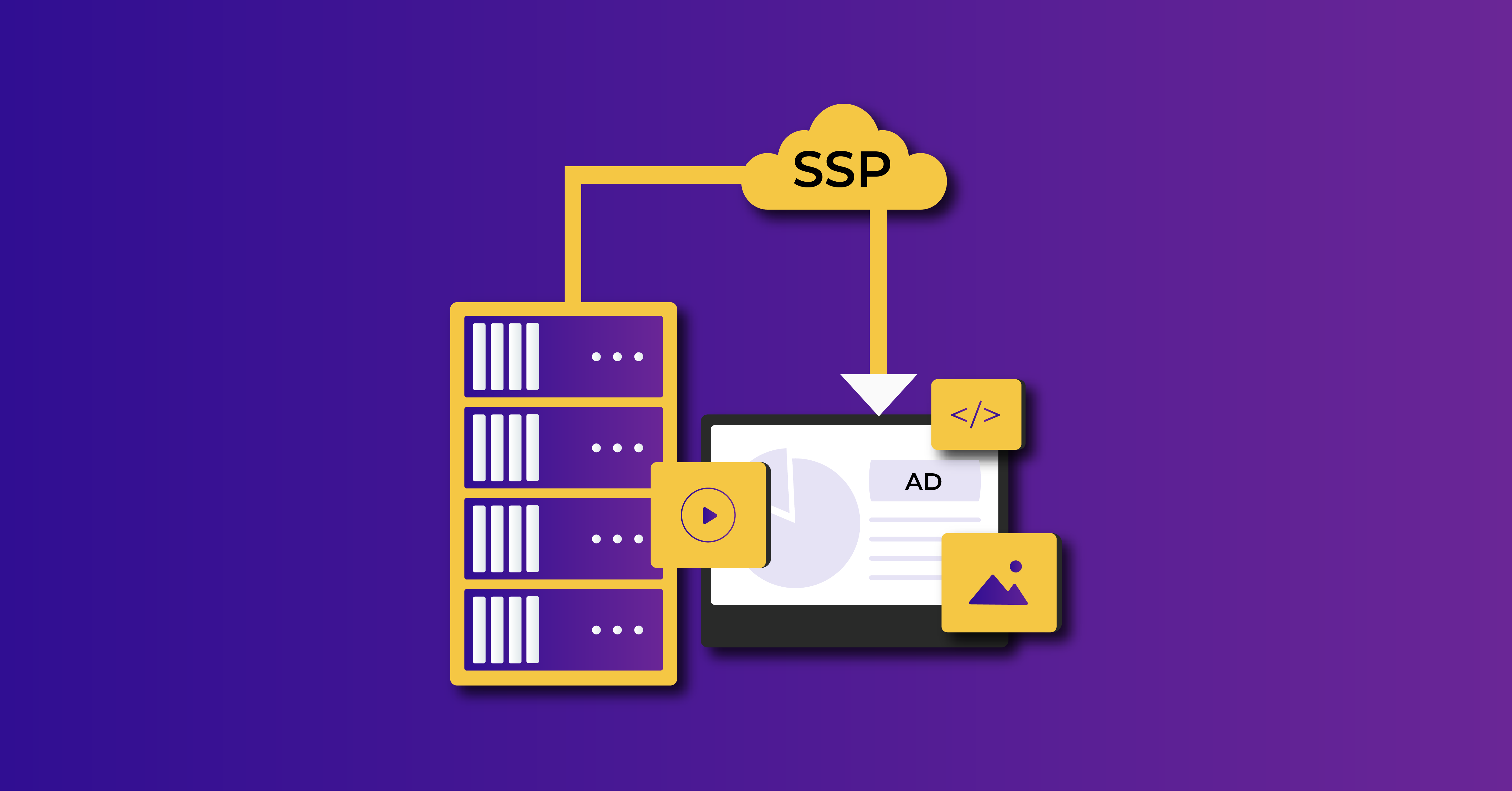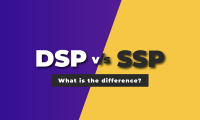What Are Supply-side Platforms? Here’s What Publishers Need To Know
In today’s digital era, automation reigns supreme as the go-to method for achieving optimal efficiency. Programmatic advertising, which has played a pivotal role in revolutionizing the way digital ads are bought and sold, is a prime example. Within this transformative landscape, supply-side platforms (SSPs) have emerged as crucial partners in the monetization journey of publishers.
These programmatic platforms enable publishers to connect with demand sources effectively, take control of their ad inventory, and maximize their ad revenue. Publishers and content creators who understand the value of embracing SSPs gain a competitive edge in today’s cluttered digital landscape. They can unlock a wide array of opportunities, optimize their revenue streams, and take their website monetization to the next level.
What is a supply-side platform?
Supply-side platforms or sell-side platforms serve as a crucial bridge between publishers and demand sources, allowing publishers to expand their reach and expose their ad inventory to a broader market. By leveraging SSPs in ad tech, publishers gain efficient management and optimization capabilities for their ad inventory, enabling them to connect with a wide range of demand sources such as top ad networks.
With the flexibility provided by SSPs, publishers can set pricing rules, exercise control over the types of ads displayed on their websites, and effectively manage the allocation of their inventory across various demand partners. The programmatic buying and selling of ad impressions are facilitated by SSPs through real-time bidding (RTB) auctions, wherein advertisers bid for available impressions within milliseconds.
How does a supply-side platform work?
Here’s a step-by-step overview of how a supply-side platform works:
- Publishers integrate their websites with an SSP, providing details about their ad inventories.
- The SSP connects with various demand sources, including top ad exchanges, ad networks, and advertisers.
- When a user visits a publisher’s website, an ad request is sent to the SSP.
- The SSP, in conjunction with an ad server, conducts a real-time auction, inviting demand sources to bid for the ad impression.
- Demand sources submit bid responses with their desired price for the impression.
- The SSP, with the assistance of the ad server, evaluates the bids and selects the highest bidder or the most suitable bid.
- The ad server, in collaboration with the SSP, serves the winning ad creative to the publisher’s website for display.
- Publishers can access reporting and analytics, provided by the ad server and SSP, to track ad performance and optimize their inventory.
- SSPs also facilitate payment settlement between publishers and demand sources.
What is the difference between SSP and DSP?
A demand-side platform (DSP) is a programmatic platform used by advertisers to buy ad inventories across multiple ad exchanges, publishers, and ad networks. DSP and SSP play complementary roles in the programmatic advertising ecosystem.
While an SSP is primarily used by publishers to connect with demand sources and optimize the monetization of their ad inventory, a DSP is utilized by advertisers to reach their target audiences and execute targeted advertising campaigns.
Supply-side Platform vs Demand-side Platform
| SSP (Supply-Side Platform) | DSP (Demand-Side Platform) |
| Connects publishers with demand sources (ad networks, ad exchanges, advertisers) | Connects advertisers with multiple ad exchanges and publishers |
| Enables publishers to monetize their ad inventory by optimizing the selling process | Facilitates the buying process for advertisers by accessing available ad inventory |
| Focuses on maximizing revenue for publishers by connecting them with suitable demand sources | Focuses on optimizing ad campaigns and reaching target audiences efficiently |
| Provides tools for publishers to manage and optimize their ad inventory and pricing rules | Offers advertisers targeting capabilities, budget management, and campaign optimization tools |
| Integrates with ad servers to deliver and track ad impressions on publishers’ websites | Integrates with data management platforms (DMPs) to leverage audience data for precise ad targeting |
| Provides reporting and analytics for publishers to track ad performance and other top metrics to maximize revenue | Offers reporting and analytics for advertisers to measure campaign effectiveness and ROI |
What is the difference between SSP and ad networks?
An ad network is a company or a platform that connects advertisers with the advertising needs to the publishers. Ad networks essentially aggregate the ad inventory from multiple publishers and make it available to advertisers.
Ad Network has both SSP and DSP functions, it can have direct publishers, direct advertisers, DSPs, and SSPs. Both SSPs (Supply-Side Platforms) and ad networks are used by publishers, but there are distinct differences between them.
Supply-side Platforms vs Ad Networks
| SSP (Supply-Side Platforms) | Ad Networks | |
| Function and Purpose | Manage and optimize advertising inventory for publishers across multiple ad networks, exchanges, and DSPs. | Aggregate ad inventory from multiple publishers and connect it with advertisers. |
| Control and Transparency | Publishers have more control over inventory, set pricing floors, and have direct access to detailed analytics and reporting. Offers transparency in performance across demand sources. | Publishers have less control and limited transparency. Inventory may be bundled with other publishers, making it difficult to track specific targeting. |
| Integration and Reach | Require technical integration with the publisher’s ad serving system. Integrates with multiple ad exchanges and DSPs, providing access to a broad pool of demand sources. | Simple integration process using ad tags or SDKs provided by the ad network. Taps into the network of advertisers associated with the ad network. |
| Pricing Model | Revenue-sharing model is based on a percentage of the generated revenue from ad impressions. The publisher sets floor prices for inventory. | Pricing is negotiated directly with publishers. Offers fixed CPM rates or other pricing models based on inventory volume and quality. |
Features of SSP
- Inventory Management
This is one of the prime features of supply-side platforms for publishers in advertising as publishers can set competitive prices, allocate inventory to the most valuable demand sources, and implement yield optimization techniques to maximize revenue generation. It enables publishers to curate their ad placements, formats, and targeting options to enhance ad performance. By ensuring that ads are displayed in the most relevant and engaging contexts, publishers can improve click-through rates, conversions, and overall ad effectiveness.
Effective inventory management streamlines the ad selling process and improves operational efficiency. publishers can provide more relevant and personalized ad experiences, increasing the chances of capturing user attention, driving higher engagement, and striking the right balance between ads and user experience.
- Real-time Bidding
SSPs enable publishers to participate in real-time auctions where advertisers and demand-side platforms (DSPs) bid for available ad impressions. When a user visits a publisher’s website, an ad request is sent to the SSP, which then initiates the auction process by inviting relevant demand sources to bid.
SSPs evaluate bids received from demand sources during the RTB auction. They consider factors such as bid price, targeting parameters, and campaign objectives to determine the winning bid. To make the most of this feature, publishers and content craters must strategically set up header bidding.
This is one of the top programmatic ad trends in 2023 that allows publishers to run simultaneous auctions among multiple demand sources before making a request to their ad server, increasing competition and potentially driving higher bid prices.
- Floor Pricing
Top supply-side platforms offer the feature of floor pricing, which helps publishers attract potentially higher bids for their inventories, leading to the achievement of a higher eCPM (effective cost per thousand impressions). By setting floor prices, publishers can filter out bids that fall below their desired minimum value. This allows them to prioritize higher-priced bids and attract more competitive demand.
Floor pricing in SSPs helps publishers maintain control over the perceived value of their inventory. By setting a minimum price threshold, publishers can avoid underselling their ad impressions.
- Reporting
Reporting from SSPs plays a vital role in understanding ad performance and optimizing strategies for the highest performance. SSP reporting provides valuable insights into ad impressions, clicks, fill rates, eCPM, and revenue generated, allowing publishers to evaluate the effectiveness of their ad inventory. By analyzing these metrics, publishers can identify trends, spot underperforming areas, and make data-driven optimizations to maximize ad revenue.
However, to gain a comprehensive understanding of overall website performance, user behavior, and content engagement, integrating Google Analytics 4 is crucial. This next-gen version of Universal Analytics provides in-depth metrics on website traffic, user demographics, bounce rates, conversions, and more.
The combination of reporting from SSPs and analytics from Google Analytics empowers publishers and content creators to holistically assess both ad performance and content quality. By leveraging insights from both sources, publishers can optimize their ad strategies, improve content quality, and simultaneously enhance ad revenue and user experience.
Benefits of SSP for publishers
- High demand density
SSPs (Supply-Side Platforms) offer publishers access to a diverse range of demand sources, including advertisers, direct advertising, ad networks, and DSPs (Demand-Side Platforms). This multi-faceted approach enables publishers to tap into a wide pool of potential buyers, increasing competition for their inventory.
With increased competition, publishers have the opportunity to generate higher bids for their ad space, resulting in enhanced ad revenue. By leveraging SSPs, publishers can unlock the potential of their inventory, attract a variety of demand sources, and optimize their monetization strategies to maximize their overall ad revenue.
- Yield optimization
SSPs (Supply-Side Platforms) go beyond connecting publishers with demand sources. They leverage advanced algorithms and optimization techniques to boost the yield of publishers’ ad inventory. Through in-depth analysis of data, including historical performance, user behavior, and market trends, SSPs dynamically allocate inventory and fine-tune pricing strategies.
This data-driven approach ensures that each impression is monetized to its fullest potential, maximizing revenue for publishers. In addition to maximizing the yield of publishers’ ad inventory, SSPs also play a crucial role in optimizing e-commerce ad campaigns.
- Header bidding
SSPs (Supply-Side Platforms) offer publishers a significant advantage through the integration of header bidding. It is a technology that allows publishers to offer their inventory to multiple demand sources simultaneously before making ad calls to their ad server.
Firstly, it increases competition for their ad inventory, leading to higher bids and increased ad revenue. Secondly, it provides publishers with greater control and transparency over their inventory, allowing them to optimize pricing and fill rates.
Lastly, header bidding is closely connected to real-time bidding (RTB), enabling publishers to tap into the dynamic bidding environment and attract more demand, ultimately resulting in enhanced monetization opportunities and improve overall revenue. By integrating with an SSP and strategically setting up their header bidder, publishers can enjoy several benefits.
- Identity solutions
Many SSPs (Supply-Side Platforms) now offer identity solutions as a benefit for publishers. Identity solutions have become increasingly important in the advertising industry due to privacy regulations, cookie deprecation, and the need for more precise targeting and personalization.
Identity solutions offered by SSPs enable publishers to better understand and target their audiences. By leveraging user authentication, consented data, and deterministic or probabilistic matching techniques, publishers can deliver more relevant and personalized ads to their users, leading to higher engagement and better monetization strategies.
- Access to data
SSPs enable publishers to extend their audience reach and monetize their data through partnerships or data marketplaces. Publishers can collaborate with SSPs to make their data available for targeting purposes to advertisers within the SSP’s network. This data monetization strategy allows publishers to unlock additional revenue streams by leveraging their valuable audience insights.
Data monetization through SSPs can be especially beneficial for publishers who may not have substantial first-party data or who are looking to augment their data for specific targeting purposes, such as geographic targeting for localization.
By partnering with SSPs, publishers can efficiently filter out the best demand sources, prices, and ad placements, ensuring optimal revenue generation while maintaining quality control across various factors. With SSPs they can streamline their operations, enhance ad quality, and drive revenue growth, ultimately creating a win-win situation for both publishers and advertisers in the dynamic world of digital advertising.




Leave a Reply